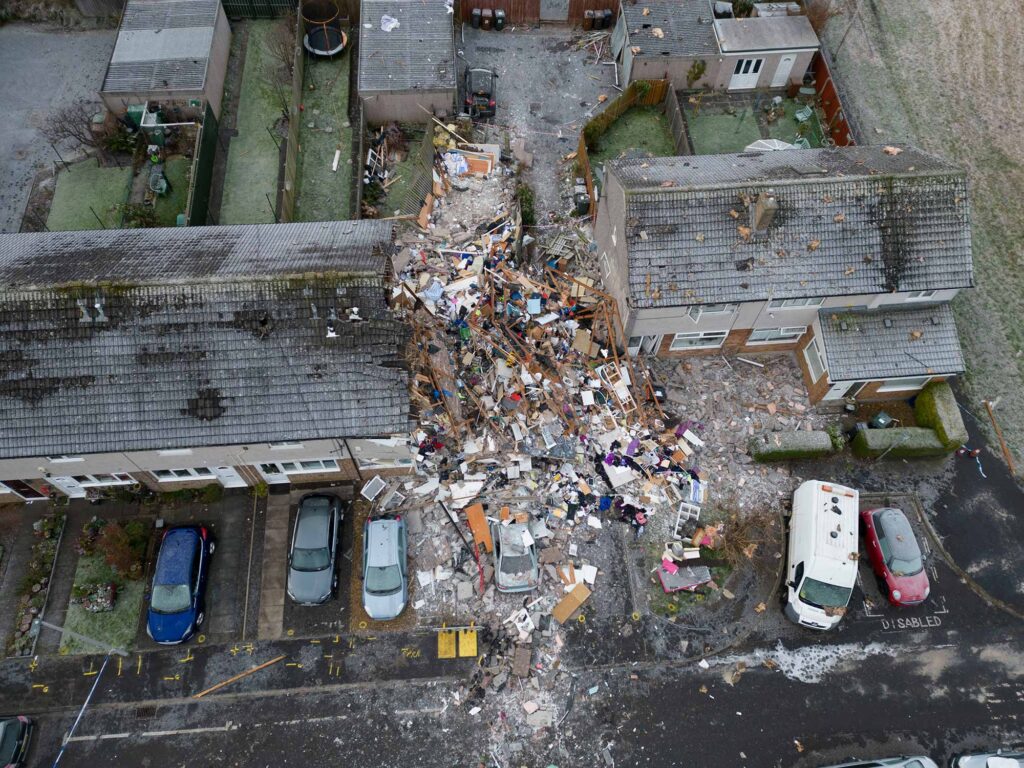By Adam Morris
Police across the UK are increasingly implementing no-fly zones to manage crime scenes and tragic discoveries, 1919 has learned.
The popularisation of drones – both among professional photographers and amateurs – has contributed to 35 temporary airspace restrictions being requested by officers in Scotland alone over the past two years.
And the Civil Aviation Authority (CAA), the organisation responsible for making the orders, said numbers are rising across Britain as officers try to retain privacy and control over certain scenes.
Most orders are in place for a 24 to 48-hour period, with anyone breaching them risking a criminal conviction.
In June, officers in Scotland announced a flurry of no-fly zones in response to the bodies of missing people being found, including that of Cole Cooper, the teenager who was missing for a month near Falkirk.
Similar restrictions were also announced following the discovery of the body of missing person Stephen Speedie in Dunning, Perthshire.
“Police Scotland may submit a request for a permanent or temporary airspace restriction for public safety,” a force spokesperson said.
“This includes during a major incident when there is an ongoing emergency response, when drones and other emergency aircraft are operating in a specified area, during an event which involves the movement of a large group of people, or for national security purposes.
“We would always urge people to check if it is legal to fly in your area. It is a criminal offence to fly in restricted airspace.”
“It is a criminal offence to fly in restricted airspace”
Police Scotland
No-fly zones are also implemented when a crime scene is linked to terrorism, as was the case in Edinburgh last month when a vehicle crashed into an aerospace factory. Three women have since been charged under the Terrorism Act.
And major events can be subject to bans, most recently the visit of US President Donald Trump to Ayrshire and Aberdeenshire.
Alan Simpson, a professional freelance photographer based in Edinburgh, said drones are being used increasingly at crime scenes and other public interest events by the media.
As a professional photographer, he followed proper procedures when capturing drone footage of a devastating gas explosion on Baberton Mains Avenue in the capital in 2023 – pictured below.

“It helps show a perspective of where things are and what’s happening,” Simpson said.
“I think the police are a bit quick to put up restrictions, and there’s maybe a bit of a lack of trust.
“I was at a crime scene recently and the officer said I could use a drone so long as I didn’t fly it up to the windows of the house to look through.
“Professional photographers would never do that – we are licenced and insured and take our responsibilities extremely seriously.”
One police source told 1919 that officers on the ground are still getting used to the trend.
“There’s a lot going on at a crime scene, loads to think about and things happening quickly. Not everyone knows what to do if someone turns up wanting to fly a drone over the scene,” he said.
A spokesperson for the CAA said a total of 82 requests had been made by UK police forces in 2024 for restrictions.
And by July this year, 95 requests had been made, meaning numbers for 2025 are on course to double.
“All applications must be justified against criteria detailed within the Air Navigation Order,” they added.
“We only react to what the police forces request, and the reasons vary. There’s no particular pattern and it ranges across all forces.”
